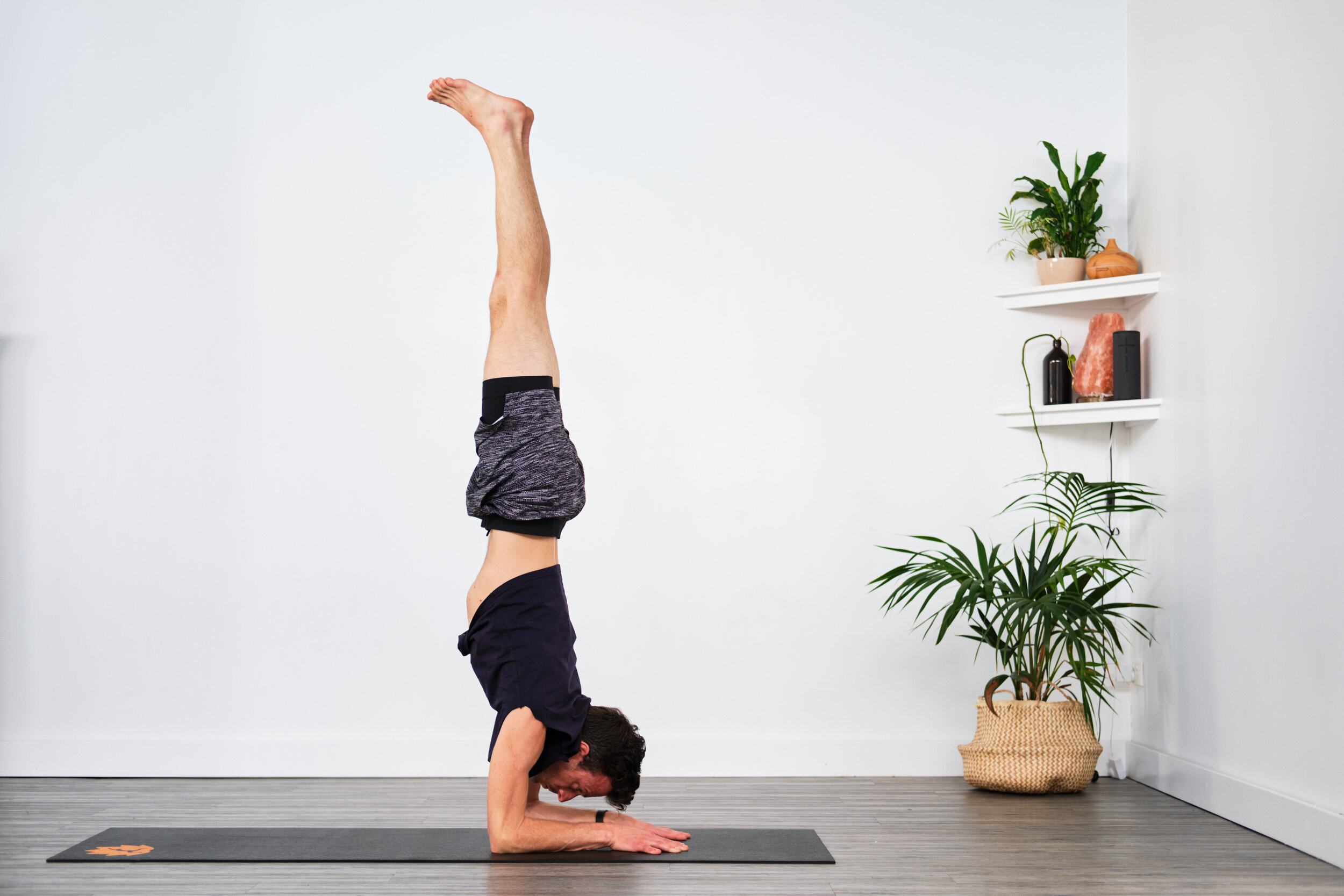Posture of the month: Pincha Mayurasana (Peacock Feather Pose)
To kick off the new year, we are back practicing Forearm Balances with a posture that’s both challenging and beautiful, named after one of nature’s most beautiful children.
Pincha Mayurasana (say: Pin-cha-Mah-Yoor-Ah-sana) in Sanskrit means 'Peacock Feather Stand' - from pincha: feather, mayura: peacock and asana: posture.
Benefits and Contra Indications
Its benefits include improved balance and strengthened shoulders, arms, core and back. It is also said to help against mild depression, by calming the mind.
However, during pregnancy, or if you are experiencing issues with headaches, high blood pressure or a weak heart, you should not practice Pincha Mayurasana. And make sure not to practice it on an empty stomach… for obvious reasons.
The story behind Pincha Mayurasana
Whilst researching details about the Peacock Feather pose, I was intrigued with the roots it has in Indian mythology…
Kartikeya, the ever-youthful Hindu god of war, is said to have been the son of the Pleiades - six celestial sisters, each of which, by the grace of Shiva, bore an identical child. When Parvati (Shiva’s wife) found out about them, she kept the six little boys under her care. Her love was so great that she picked all six one day and squeezed them so much that they transformed into one child with six heads. However, he is usually depicted with just one head.
At just few months old, Kartikeya was already the fiercest fighter and chose an elegant peacock as his transport, because peacocks are such ferocious fighters: they are the only ones capable to kill a cobra. Once they have killed it, they eat it with all its poison… and become even more beautiful and graceful as a result.
Around the time of Kartikeya’s birth, the king of the demons had finished a thousand years of penance ordered by Brahma, in order to ask him for a wish. When the demon asked to be immortal, Brahma replied “That makes no sense - everyone who is born must die. Ask another wish”. So the demon, intelligently, and bearing in mind the long absence of Shiva to Parvati, asked Brahma to only be killed by their son. That, at this point, seemed unlikely. Brahma fulfilled the demon’s wish, who as a result felt powerful enough to throw all the gods out of heaven. When the upset gods noticed that Kartikeya grew rapidly, even in skill and intelligence, they begged Shiva to allow him to lead a war against the demon.
So despite being a small child, Kartikeya took up arms to fight for the return of the gods to the heavens. The demon laughed at his sight and yelled “Are you brave enough to challenge me, small child? Go play at war with toys and take your battle somewhere else! “But at this point, Kartikeya and the gods attacked. After a long battle, Kartikeya - riding his beautiful peacock - won, and the gods were able to return to the heavens.
The peacock: feathers, courage and faith
Kartikeya’s peacock was a noble choice as the subject of transport or vahana in Sanskrit. As the God presiding over wars, Kartikeya needed a strong and bright animal to ride. Everyone knows the peacock’s regal qualities, but few are aware of its ferocity. Peacocks will even attack and defeat cobras, it symbolises conquering death, as Kartikeya does, riding on the peacock during the battle.
The peacock also symbolises fidelity and the quality of light. It walks the earth with a bold and elegant attitude, and is thus seen to represent the quality of sattva guna, the mode of goodness. When a Peacock’s mate dies, it stays alone for the rest of its life.
In the Vedic scriptures, peacocks are closely linked with Krishna because he always wears a peacock feather in his hair. The forest of Vrindavan, where he was born, is full of peacocks. Their dance has been compared to Krishna’s dance with the gopis, the cowherd girls of Vrindavan. They represent the spirit souls, who are completely surrendered to Krishna, the Divine person.
Want to find out more? Read the full blog article on the ashtangayamaniyama blog.
As always, remember to come along to Flex regularly and practice with us! There are over 25 classes/week, and we will practice Pincha Mayurasana daily during all of January!
Ready to learn Pincha Mayurasana?
Watch our old friend Cam explain the posture and how to master it. To practice, come along to Flex this month - we practice our Postures of the Month consistently in every class. See you on the mat!!




